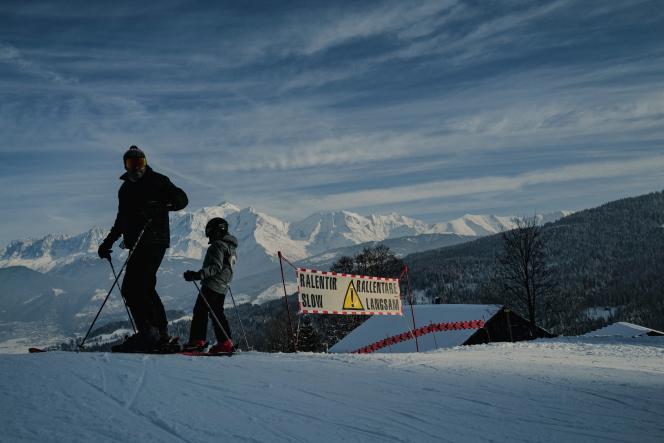Climate change compromises the return of snow in winter, threatening the future of ski resorts. At what pace? This question – which remains a source of controversy, particularly in the mountains – is the subject ofa scientific study published in the journal Nature Climate Change, monday august 28, and co-signed by researchers mainly from the National Research Institute for Agriculture, Food and the Environment (Inrae) and Météo France. Their work does not set a deadline, but models the consequences for European mountains of increasing global warming, up to 4°C compared to the pre-industrial period.
“Our objective, with this spatial and climate modeling study – the first on this scale – is to dispassionate the debates, to overcome the caricatural reactions in an approach of transition to another economic model, but not in a perspective of rupture”, says Hugues François (Inrae, University of Grenoble Alpes), specialist in land use planning. Because whatever the scenario, it’s good “speed of withdrawal” of the snowpack in question.
With a warming of 1.5°C, 32% of the 2,234 ski resorts in Europe would face a “very high risk” snow shortages. The researchers established this concept from the 20% of the most unfavorable years for natural groomed snow, during the reference period 1961-1990. With +2°C, 53% of stations would be in the same situation; 91% at +3°C and 98% at 4°C. The use of artificial snow reduces the difficulties but varies according to the coverage rate selected. If the latter is 75%, the risk still rises to 57% of the stations for + 3°C or 74% for + 4°C.
The carbon footprint of artificial snow
These global data, which concern 28 countries, take into account both the frequency of winters with little snow, the altitude of the slopes and their exposure. Thus for France, the models show a sharp fall in snow cover around 1,400 meters above sea level, suggesting a very different future for mid-mountain destinations and for large high-altitude resorts.
In order to take into account a very important heterogeneity, the researchers subdivided the massifs of Europe. For the Alps, their forecasts indicate that, in the event of a temperature higher than 3°C, 87% of the stations located in Switzerland would face very high risks of winters with brown tones rather than pure white, compared with the 5% concerned if the warming was contained to +1°C. Under the same conditions, they would be 93% in France (instead of 4% at 1°C higher), 94% in Austria (rather than 6%), 100% in Germany (compared to 20%) and in Italy (instead of 69%). If the slopes are 75% equipped with artificial snow, these rates are reduced to 26% in Switzerland, 42% in France, 64% in Germany… “We expected a more pessimistic result for France, comments Hugues François. I hope that each country will not conclude from this: we are not the most vulnerable or we are the ones who emit the most greenhouse gases. »
You have 32.75% of this article left to read. The following is for subscribers only.
